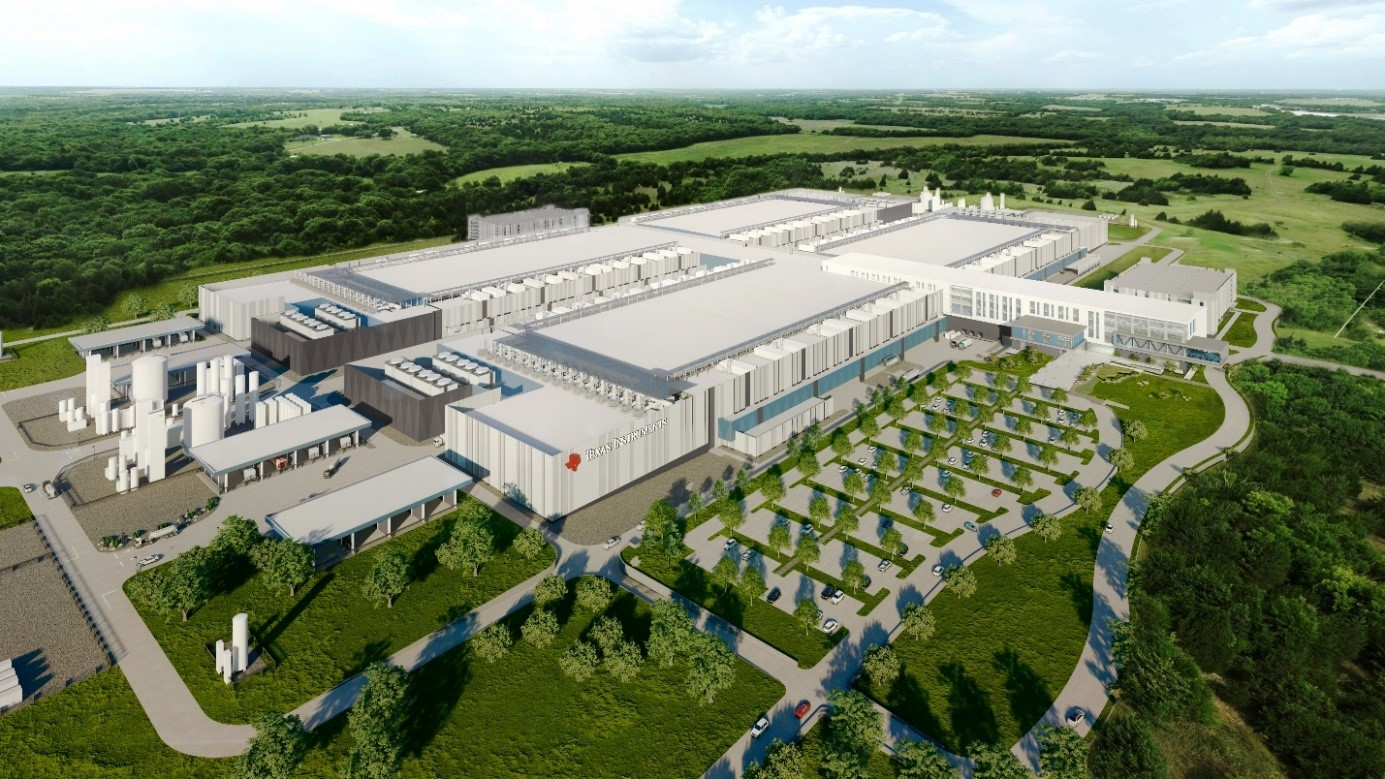Published :7/29/2022 9:42:24 AM
Click Count:2103
On May 19, Texas Instruments (TI) sent out a press release announcing that it broke ground on its new 12-inch semiconductor wafer manufacturing facility in Sherman, Texas. The project costs about $30 billion and plans to build four factories. The first 12-inch plant is expected to open in 2025.
In addition to the 12-inch plant, in July 2021, TI acquired a 12-inch wafer manufacturing facility in Lehi, Utah, called LFAB, from Micron Technology for $900 million. The plant was originally planned by Micron Technology to produce 3D Xpoint memory chips, but was sold to TI as Micron exited the 3D Xpoint business. When TI takes over, it plans to adapt it to make analog and embedded chips for 65nm and 45nm processes, with production expected to begin in early 2023.
In addition, TI's 12-inch wafer manufacturing plants include DMOS6 in Dallas, Texas; RFAB1 and RFAB2 in Richardson, Texas, are nearing completion and are expected to begin production in the second half of 2022. TI is arguably the fastest manufacturer of 12-inch wafers.

Figure: Design concept for TI Sherman's new 12-inch semiconductor wafer manufacturing site (Source: TI)
In addition to TI, there are many analog chip giants with 12-inch wafer fabrication plants. Infineon, for example, currently has two 12-inch wafer plants, one in Dresden, Germany, and one in Villach, Austria. After three years of preparation and construction, Filah's plant was officially opened in September 2021 and is currently in the stage of capacity climbing; Anson has a 12-inch fab in East Fishkill, and Grid's 12-inch fab in East Fishkill, N.Y., which it acquired in 2019, won't be fully operational until 2023; ST shares a 12-inch fab with Tower. In addition, Toshiba, Renesas, and Bosch all announced plans to build 12-inch wafers this year.
In China, Silanwei has two 12-inch specialty production lines in Xiamen and plans to build a new 12-inch production line in Hangzhou. The company's 12-inch wafer plant in Lingang has been under construction since early last year. In terms of domestic OEM, China Resources Micro, Huahong Wuxi and Yuexin Semiconductor and other manufacturers have established 12-inch special process OEM production lines.
Benefits of a 12-inch wafer fabrication plant
Why are so many analog chip makers heading to 12-inch wafers? In fact, the development of integrated circuits has been two ways. One is the size of the wafer, from 4 inches to 8 inches to 12 inches. One is the chip manufacturing process, the line width is constantly shrinking, from 130nm, 90nm, 65nm, 45nm, 28m and so on.
By expanding the size of the wafer from 8 inches to 12 inches, a single wafer can produce more chips and will have a lower effective unit cost. Typically, a 12-inch wafer has 2.23 times the area of an 8-inch wafer, and if an 8-inch wafer can produce 88 chips, a 12-inch wafer can produce 232 chips.
According to industry estimates, upgrading from 8-inch wafers to 12-inch wafers could cut the cost of making chips by about 20 percent. As a result, analog chip companies are looking to move toward 12-inch wafers.
Which analog chip companies need 12-inch wafers for manufacturing?
In terms of the benefits of 12-inch wafers, everyone wants to move to 12-inch wafers, but the ones we see in front of us with 12-inch wafers are basically big, older analog chip companies. Why?
While the larger the wafer size, the lower the cost, the larger the wafer size also requires higher process and yield requirements, analog chip industry insiders told Electronophile. There are two factors to consider for analog chip companies whether to adopt 12-inch wafers: first, whether the process and technology are mature enough; The second is whether the end demand for the chip is large enough.
Because if you move to a 12-inch wafer factory, you have to invest a lot more in the first place. There's a difference between a 12-inch process and an 8-inch process, which is generally more advanced, and the more advanced the process, the higher the cost of the input. And terminal demand, enterprises need to consider their own products in the market sales volume can support 12-inch wafer, to 12 inches, means that the output will be greater, if the market demand is not big enough, it may cause high inventories, so the cost saved became the inventory, for the enterprise is not much meaning.
Therefore, if analog chip companies can meet the process and technology requirements, yield is high enough, and chip sales are large enough, they can confidently move to 12-inch wafers. Otherwise, an 8 - or 6-inch wafer might be more cost-effective.
Conclusion
Analog chip is an industry that requires technology accumulation. There are many domestic Fabless analog chip enterprises, which are generally small in scale at present. In fact, they do not need to rush to the most advanced technology and the most advanced OEM. I believe that as long as the foundation is solid, we will be able to go further.